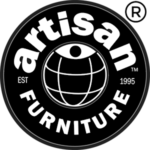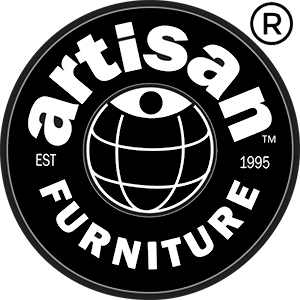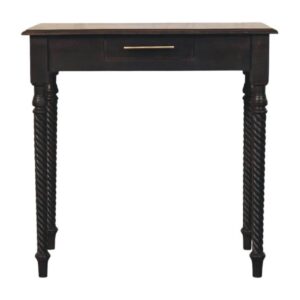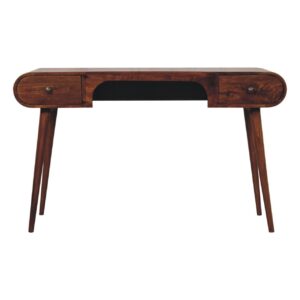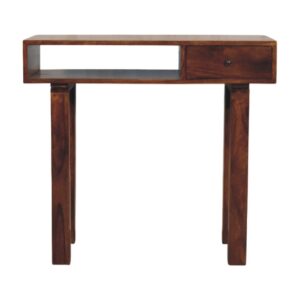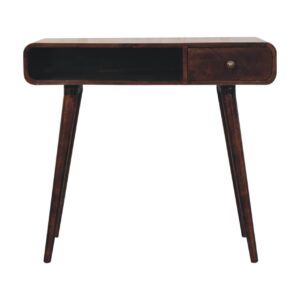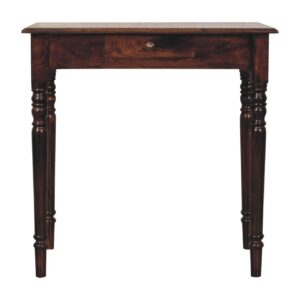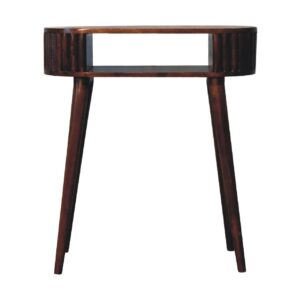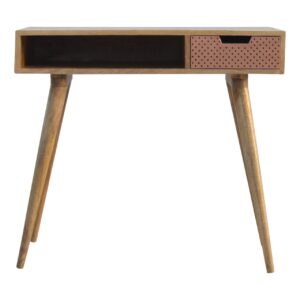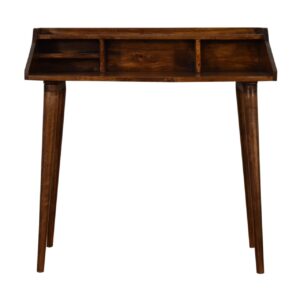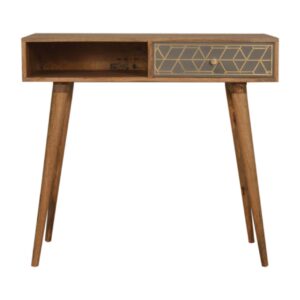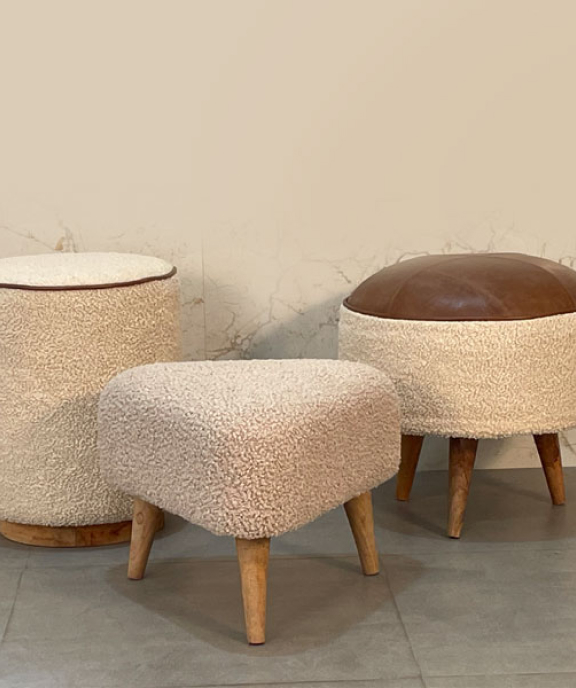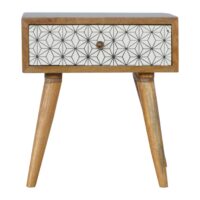Another word for "writing desk" includes terms like "bureau" and "table." A bureau typically features drawers and is designed for both writing and storage, making it versatile in various settings. Alternatively, the term "table" can denote a broader array of surfaces used for writing or working, but it may lack the specific features of a traditional writing desk. Different regions might employ distinct terminology, affecting the choice of words you might encounter. Understanding these variations enriches your vocabulary and allows you to select the most suitable term for your context, revealing deeper insights into desk styles and their functions.
Common Synonyms for Writing Desk
When it comes to finding the right term for a writing desk, several common synonyms come to mind. One of the most widely used alternatives is "bureau," which often refers to a desk with drawers. Another popular term is "table," although this is more general and can describe various surfaces. You might also encounter "workstation," a term that emphasizes functionality and organization. Additionally, "office desk" is frequently used, particularly in professional settings. Each synonym carries slightly different connotations; for instance, "vanity" specifically denotes a writing desk designed for personal grooming. Understanding these synonyms can enhance your vocabulary and help you choose the most appropriate term based on context and purpose, ensuring effective communication in both casual and formal writing.
Types of Desks Explained
When you think about writing desks, it's important to recognize the various types and styles available. Each type serves a specific function, from traditional writing desks that prioritize surface space to modern designs that incorporate technology. Understanding these distinctions can help you choose the right desk for your needs, whether it's for writing, working, or studying.
Types of Writing Desks
Whether you're a student, a professional, or a creative writer, choosing the right type of writing desk can greatly impact your productivity and comfort. There are several types to evaluate based on your needs. For instance, a traditional writing desk offers a spacious surface, ideal for spreading out materials. A corner desk maximizes space, fitting snugly into a room while providing ample workspace. If you prefer a minimalist approach, a floating desk attaches to the wall, saving floor space. Alternatively, an L-shaped desk provides versatility, allowing for multiple work zones. Finally, standing desks promote health by enabling you to alternate between sitting and standing. Each type serves distinct purposes, helping you create an effective and comfortable workspace tailored to your activities.
Desk Styles and Functions
Desk styles and functions play an essential role in shaping your workspace experience. Different types of desks cater to various needs, enhancing productivity while providing comfort. For instance, an L-shaped desk maximizes corner space, making it ideal for multitasking. A standing desk promotes better posture and encourages movement, which is beneficial for long hours of work. Writing desks, often compact, focus on creating a dedicated area for focused tasks, while executive desks typically offer ample storage and a commanding presence. Additionally, desks with integrated technology, like USB ports and wireless charging, facilitate modern work habits. Selecting the right desk style not only affects your efficiency but also influences the overall aesthetics of your workspace. Choose wisely to create an effective environment.
Historical Context of Writing Desks
As the need for written communication grew, so did the evolution of the writing desk, transforming from simple surfaces into complex furniture pieces. Early writing desks, often basic tables, catered to scholars and clerics who required a dedicated space for their manuscripts. By the Renaissance, intricate designs emerged, reflecting the era's craftsmanship and emphasizing status. The introduction of drawers and compartments in the 18th century provided functionality, allowing for better organization of writing materials. In the 19th century, industrialization made desks more accessible, with standardized designs catering to the burgeoning middle class. This evolution not only mirrored societal changes but also highlighted the importance of literacy and documentation as essential components of modern civilization, shaping how you engage with written words today.
Desk Styles and Their Names
When you think about writing desks, it's crucial to recognize the various styles that cater to different needs and aesthetics. From traditional roll-top desks to sleek modern designs, each type has its own unique features and terminology that define its function and form. Understanding these distinctions not only helps you choose the right desk for your space but also enriches your appreciation of furniture design as a whole.
Types of Writing Desks
A writing desk can greatly influence your productivity and comfort while working. There are several types of writing desks, each designed for different needs and preferences. The traditional rectangular desk offers a straightforward workspace, while L-shaped desks provide additional surface area, ideal for multitasking. If you prefer a more compact option, consider a corner desk, which maximizes space efficiency. Standing desks are gaining popularity, as they promote healthier working habits, allowing you to alternate between sitting and standing. Roll-top desks offer a classic aesthetic with the added benefit of concealed storage, while modern minimalist styles focus on simplicity and functionality. Each desk type serves a unique purpose, so choosing the right one can enhance your overall work experience.
Desk Design Terminology
Choosing the right writing desk involves understanding various desk design terminology. Different styles cater to specific needs and aesthetics. For instance, a traditional desk typically features ornate details and rich wood finishes, while a modern desk emphasizes minimalism and clean lines. A corner desk maximizes space, fitting snugly into an office corner, whereas a standing desk promotes ergonomics by allowing you to work while standing. Additionally, an executive desk often conveys authority, with ample surface area and storage. Knowing terms like "rolltop," which refers to a desk with a sliding cover, or "drop-leaf," describing a desk with extendable sides, helps you make informed decisions. Familiarizing yourself with these styles enhances your search for the ideal writing desk.
Functional Variations of Desks
While many people envision a traditional writing desk, the world of desks offers a variety of functional variations to suit different needs and preferences. For instance, an executive desk provides ample workspace and storage, ideal for professionals with extensive paperwork. A standing desk promotes better posture and encourages movement, catering to those who prefer an active work environment. If you're short on space, a corner desk maximizes room efficiency, fitting snugly into tight areas. Additionally, a drafting table accommodates artists and architects who require adjustable surfaces for their projects. Each of these desk types serves specific purposes, ensuring that you can find one that complements your workflow and personal style, ultimately enhancing productivity and comfort in your workspace.
Regional Terminology Differences
Desks not only vary in function but also in terminology across different regions. In the United States, you might call it a "writing desk," while in the UK, the same piece of furniture could be referred to as a "bureau." In Australia, the term "study desk" is more common, reflecting a focus on academic use. Additionally, in some European countries, you may encounter names like "schreibtisch" in German or "bureau" in French, which highlight cultural preferences. These differences can confuse someone searching for the right term, especially when shopping online. Understanding regional terminology is essential, as it can affect not only your purchasing decisions but also your communication with others regarding specific styles and functions of desks in various contexts.
Aesthetic Considerations in Desk Names
Aesthetic considerations play an essential role in how we perceive and name writing desks. When selecting a name, you might think about the desk's design, materials, and intended purpose. For instance, a sleek, modern desk could be referred to as a "minimalist workstation," reflecting its clean lines and functionality. Conversely, a vintage wooden desk may evoke names like "antique writing table," emphasizing its classic charm. These choices influence your perception of the desk's functionality and style. Additionally, the surrounding decor can impact naming; a desk in a bohemian setting might adopt a whimsical name. Ultimately, the aesthetics of a desk shape not only its function but also the language you use to describe it, bridging form and function effectively.
Creative Alternatives to Writing Desk
Exploring creative alternatives to the traditional writing desk can open up a world of possibilities for your workspace. You might consider using a standing desk, which promotes better posture and encourages movement throughout the day. Alternatively, a dining table can serve as an expansive workspace, allowing for collaborative projects or spreading out materials. If you prefer a more relaxed setting, a cozy armchair paired with a lap desk provides a comfortable writing experience. For those who thrive in nature, an outdoor table can inspire creativity while immersing you in fresh air. You can also utilize small nooks or corners with compact desks, maximizing space efficiency. Each option offers unique benefits that cater to different working styles and preferences.
Choosing the Right Desk Term
When you're choosing a desk term, it's vital to reflect on how the terminology aligns with your workspace's purpose and vibe. Consider the function of the desk; terms like "writing table" or "workstation" might better suit a creative environment, while "executive desk" conveys a more formal setting. Additionally, think about the style of your workspace; modern terms can appeal to contemporary aesthetics, whereas traditional terms resonate with classic styles. Analyze your audience as well; a more casual term may engage a younger demographic, while a formal term might cater to professionals. Ultimately, selecting the right desk term enhances communication, guarantees clarity, and contributes to the overall ambiance of your workspace, making it essential for establishing the intended atmosphere.
